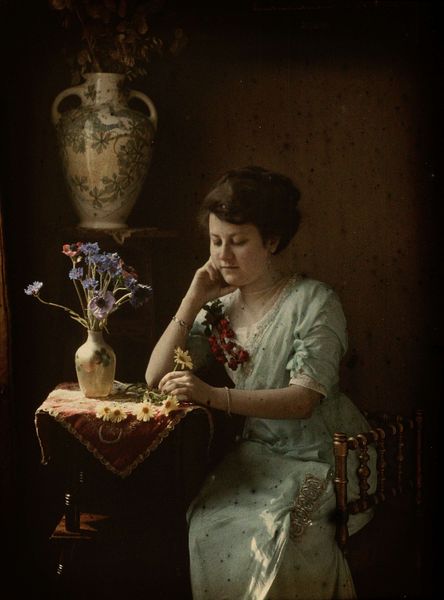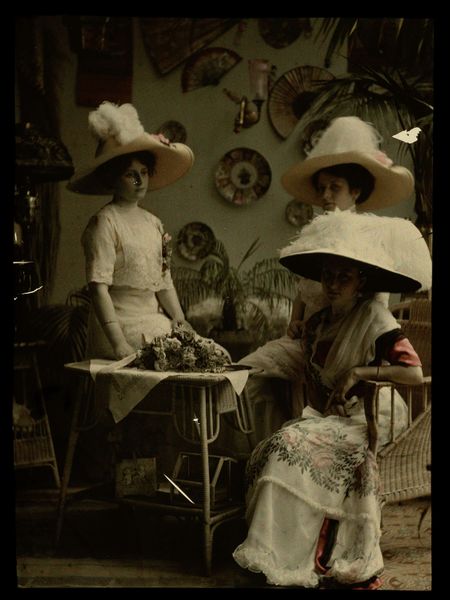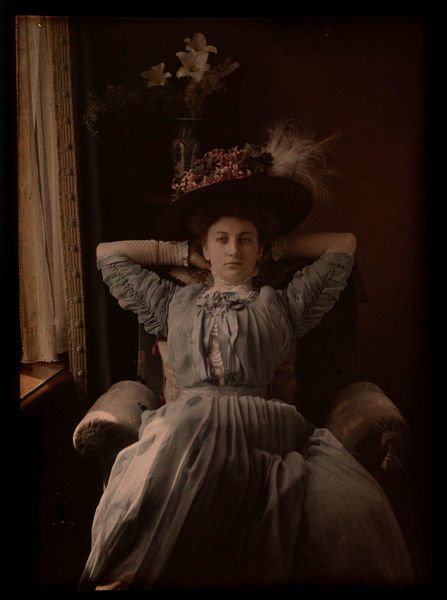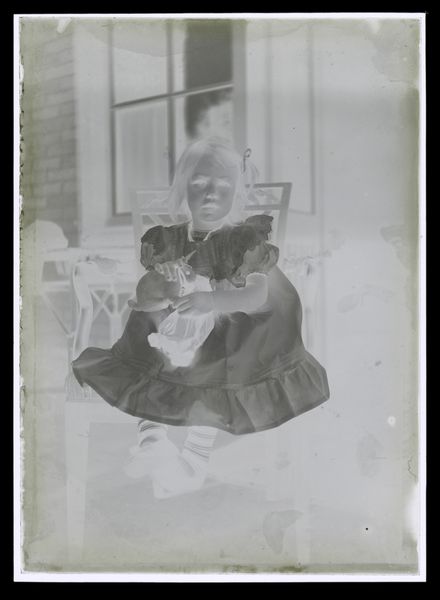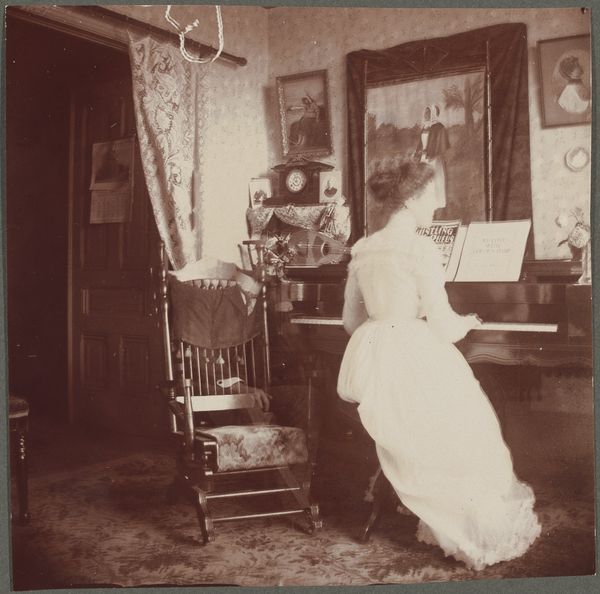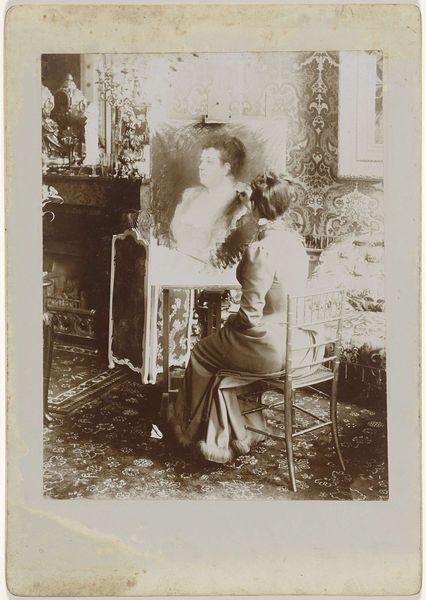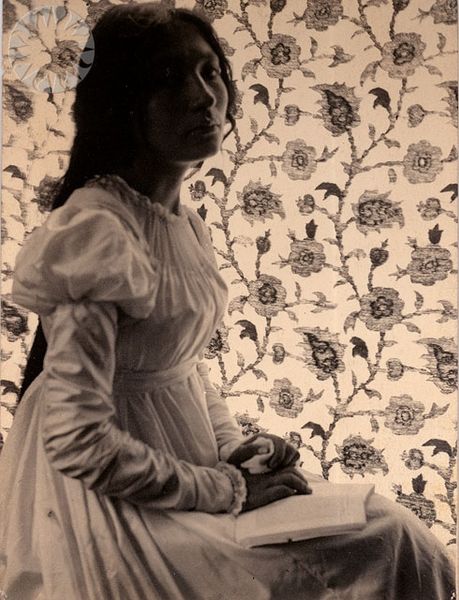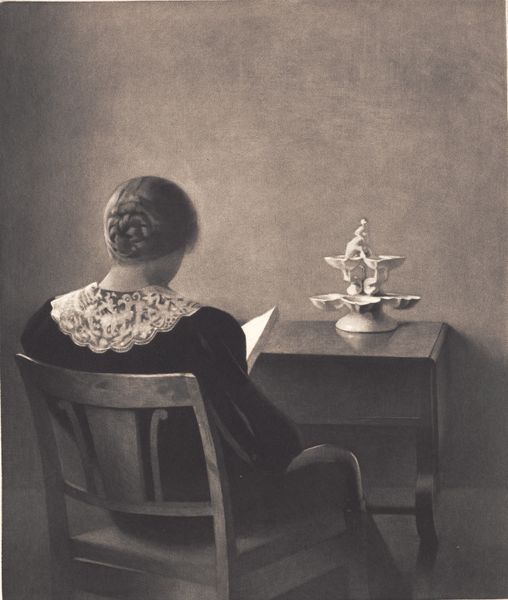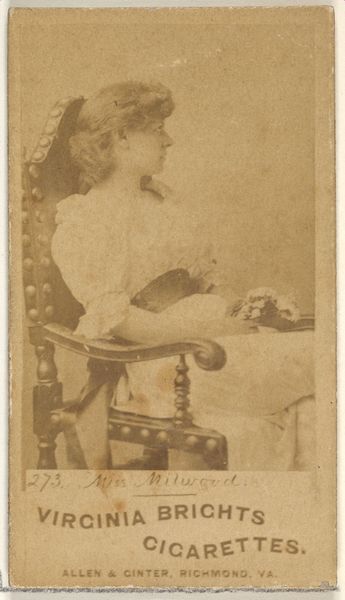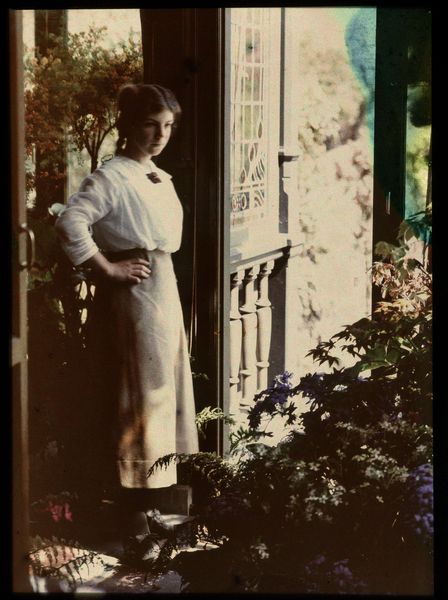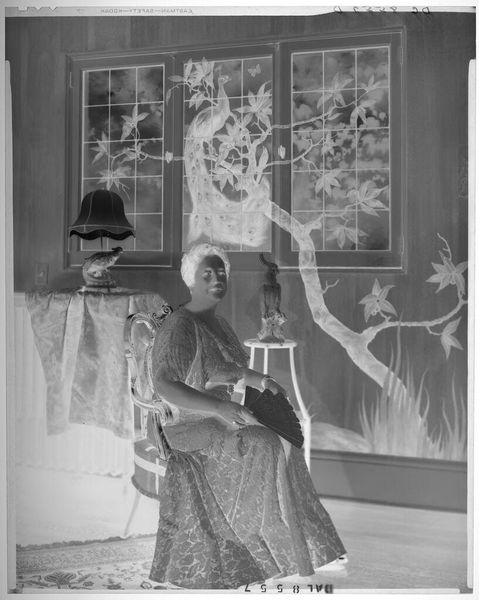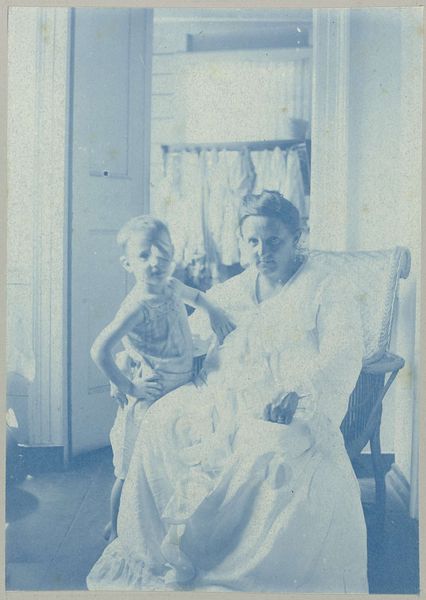
Dimensions: height 90 mm, width 120 mm
Copyright: Rijks Museum: Open Domain
Curator: Here we have "Vrouw bij raam," or "Woman by a Window," a photograph printed on paper, made sometime between 1907 and 1916 by Johannes Hendrikus Antonius Maria Lutz. What strikes you first? Editor: The subdued, almost somber mood. The light feels constrained, focusing on the woman arranging flowers. It speaks to the interiority and confinement of women's lives during this period. Curator: The composition is quite striking. Observe the geometry—the vertical lines of the window and chair, contrasted by the curve of the woman's form. It's a carefully constructed visual experience, utilizing what appears to be available natural light to achieve its effects. Editor: The light indeed seems like a deliberate commentary on the lack of access and openness experienced by women historically. Who gets to be illuminated, and on what terms? Are the flowers on the table, themselves symbolic, a meager substitute for freedom? Curator: One can interpret it that way, but also consider the formal aspects of how Lutz manipulated light and shadow to create depth and mood. The contrast accentuates the textures in the fabric, in the room. Semiotically, each element carries weight in the photograph’s meaning. Editor: The symbolism of 'woman at window' is fairly potent. Are we seeing longing, anticipation, or is the act of flower arranging merely a socially acceptable way for her to pass the time? Consider how race and class further shape such experiences. We see the white lace detail on her apron suggesting, perhaps, middle class constraints. Curator: Indeed, multiple interpretations are possible, which is partly what makes the piece engaging. Though a photographic print, it invokes aspects reminiscent of impressionistic paintings. Editor: Placing Lutz's work within historical and cultural frameworks reveals so much about gendered expectations. Understanding such perspectives enriches our dialogue with artworks of this time. Curator: A fascinating interplay between formalism and lived experience informs how we respond to and understand artworks across time and context. Editor: Exactly. Ultimately, it prompts a necessary discussion of how structures of power shaped and continue to shape our interpretations of art.
Comments
No comments
Be the first to comment and join the conversation on the ultimate creative platform.
